The acquisition of the Dixi works at Eisenach in 1928 provided BMW, hitherto a manufacturer of aero engines and motorcycles, with a foothold in motor manufacturing. Dixi's built-under-license version of the Austin Seven was gradually developed and improved, ending up with swing-axle suspension and overhead valves, and then in 1933 came the first true BMW - the six-cylinder 303. The latter adopted a twin-tube frame and abandoned the rear swing axles in favour of a conventional live axle, while up front there was a superior transverse-leaf independent suspension and rack-and-pinion steering. These features, along with the four-bearing, overhead-valve engine, would provide the basis for the more powerful and sportingly inclined models to follow. Introduced in 1938, the 327 sports-tourer used the shortened, boxed, ladder-type chassis of the 326 saloon, shared by the 320, but with semi-elliptic rear springing in place of torsion bars. The gearbox was a Hurth four-speed manual unit with freewheel between 1st and 2nd gears, enabling clutch-less gearchanges at low speeds, while there were hydraulic brakes all round. BMW's pushrod six had by now been enlarged to 1,971cc and developed around 60bhp in the 327, which could also be ordered with the 328 sports car's 80bhp unit at extra cost. Autocar magazine got its hands on a 328-engined Type 327 Sports Cabriolet in 1939, achieving the highly creditable maximum speed, for a 2-litre car, of 96.77mph while testing the BMW at Brooklands. This French-registered example of a rare and highly desirable early BMW sports car was delivered new on 24th August 1938 to a Mr Müller of Düsseldorf in Germany. The car has been in the current owner's possession for the past 18 years and is offered fresh from a 2,500-hour, concours-standard restoration, which was completed in 2009. This refurbishment included a bare metal repaint in navy blue/beige; complete engine, gearbox and axle rebuild; overhaul of the electrics; and re-plating the brightwork. Other noteworthy features include Michelin tires, navy blue leather upholstery, blue carpets (including the trunk), and blue alpaca-lined hood and tonneau cover. All the re-upholstery was carried out by the coach-trimmer De Oliveira in Reims, while the many other components required for the restoration were sourced from Brodowski in Switzerland and Hollstern Feierabend GmbH in Germany. The car comes with a spare engine and its original unit, which needs to be overhauled. It is offered with BMW Mobile Tradition certificate of authenticity confirming matching numbers. L'acquisition en 1928 des usines Dixi situées à Eisenach fournit à BMW, jusque-là producteur de moteurs d'avion et de motos, une occasion de prendre rang parmi les constructeurs automobiles. La voiture Dixi, une Austin Seven produite sous licence, fut peu à peu développée et améliorée jusqu'à recevoir une suspension arrière à demi-essieux oscillants et des soupapes en tête et, en 1933, apparut la première véritable BMW, la six-cylindres 303. Celle-ci avait un châssis bitubulaire, mais elle avait perdu ses demi-essieux oscillants en faveur d'un pont arrière rigide oscillant, tandis qu'à l'avant les roues indépendantes étaient suspendues par un ressort transversal supérieur, la direction étant confiée à une crémaillère. Ces caractéristiques, outre le moteur à quatre paliers et les soupapes en tête, allaient constituer la base des modèles plus puissants et à tendance sportive qui allaient se succéder. Introduite en 1938, la 327 de tourisme-sport était dotée du châssis en échelle raccourci et caissonné de la berline 326, partagé avec la 320, mais avec des ressorts arrière semi-elliptiques à la place des barres de torsion. La boîte de vitesses était une Hurth manuelle à quatre rapports avec, sur la première et la deuxième vitesses, une roue libre permettant de changer de rapport à basse vitesse sans débrayer. Les freins sur les quatre roues étaient à commande hydraulique. Le six-cylindres culbuté de BMW por
The acquisition of the Dixi works at Eisenach in 1928 provided BMW, hitherto a manufacturer of aero engines and motorcycles, with a foothold in motor manufacturing. Dixi's built-under-license version of the Austin Seven was gradually developed and improved, ending up with swing-axle suspension and overhead valves, and then in 1933 came the first true BMW - the six-cylinder 303. The latter adopted a twin-tube frame and abandoned the rear swing axles in favour of a conventional live axle, while up front there was a superior transverse-leaf independent suspension and rack-and-pinion steering. These features, along with the four-bearing, overhead-valve engine, would provide the basis for the more powerful and sportingly inclined models to follow. Introduced in 1938, the 327 sports-tourer used the shortened, boxed, ladder-type chassis of the 326 saloon, shared by the 320, but with semi-elliptic rear springing in place of torsion bars. The gearbox was a Hurth four-speed manual unit with freewheel between 1st and 2nd gears, enabling clutch-less gearchanges at low speeds, while there were hydraulic brakes all round. BMW's pushrod six had by now been enlarged to 1,971cc and developed around 60bhp in the 327, which could also be ordered with the 328 sports car's 80bhp unit at extra cost. Autocar magazine got its hands on a 328-engined Type 327 Sports Cabriolet in 1939, achieving the highly creditable maximum speed, for a 2-litre car, of 96.77mph while testing the BMW at Brooklands. This French-registered example of a rare and highly desirable early BMW sports car was delivered new on 24th August 1938 to a Mr Müller of Düsseldorf in Germany. The car has been in the current owner's possession for the past 18 years and is offered fresh from a 2,500-hour, concours-standard restoration, which was completed in 2009. This refurbishment included a bare metal repaint in navy blue/beige; complete engine, gearbox and axle rebuild; overhaul of the electrics; and re-plating the brightwork. Other noteworthy features include Michelin tires, navy blue leather upholstery, blue carpets (including the trunk), and blue alpaca-lined hood and tonneau cover. All the re-upholstery was carried out by the coach-trimmer De Oliveira in Reims, while the many other components required for the restoration were sourced from Brodowski in Switzerland and Hollstern Feierabend GmbH in Germany. The car comes with a spare engine and its original unit, which needs to be overhauled. It is offered with BMW Mobile Tradition certificate of authenticity confirming matching numbers. L'acquisition en 1928 des usines Dixi situées à Eisenach fournit à BMW, jusque-là producteur de moteurs d'avion et de motos, une occasion de prendre rang parmi les constructeurs automobiles. La voiture Dixi, une Austin Seven produite sous licence, fut peu à peu développée et améliorée jusqu'à recevoir une suspension arrière à demi-essieux oscillants et des soupapes en tête et, en 1933, apparut la première véritable BMW, la six-cylindres 303. Celle-ci avait un châssis bitubulaire, mais elle avait perdu ses demi-essieux oscillants en faveur d'un pont arrière rigide oscillant, tandis qu'à l'avant les roues indépendantes étaient suspendues par un ressort transversal supérieur, la direction étant confiée à une crémaillère. Ces caractéristiques, outre le moteur à quatre paliers et les soupapes en tête, allaient constituer la base des modèles plus puissants et à tendance sportive qui allaient se succéder. Introduite en 1938, la 327 de tourisme-sport était dotée du châssis en échelle raccourci et caissonné de la berline 326, partagé avec la 320, mais avec des ressorts arrière semi-elliptiques à la place des barres de torsion. La boîte de vitesses était une Hurth manuelle à quatre rapports avec, sur la première et la deuxième vitesses, une roue libre permettant de changer de rapport à basse vitesse sans débrayer. Les freins sur les quatre roues étaient à commande hydraulique. Le six-cylindres culbuté de BMW por


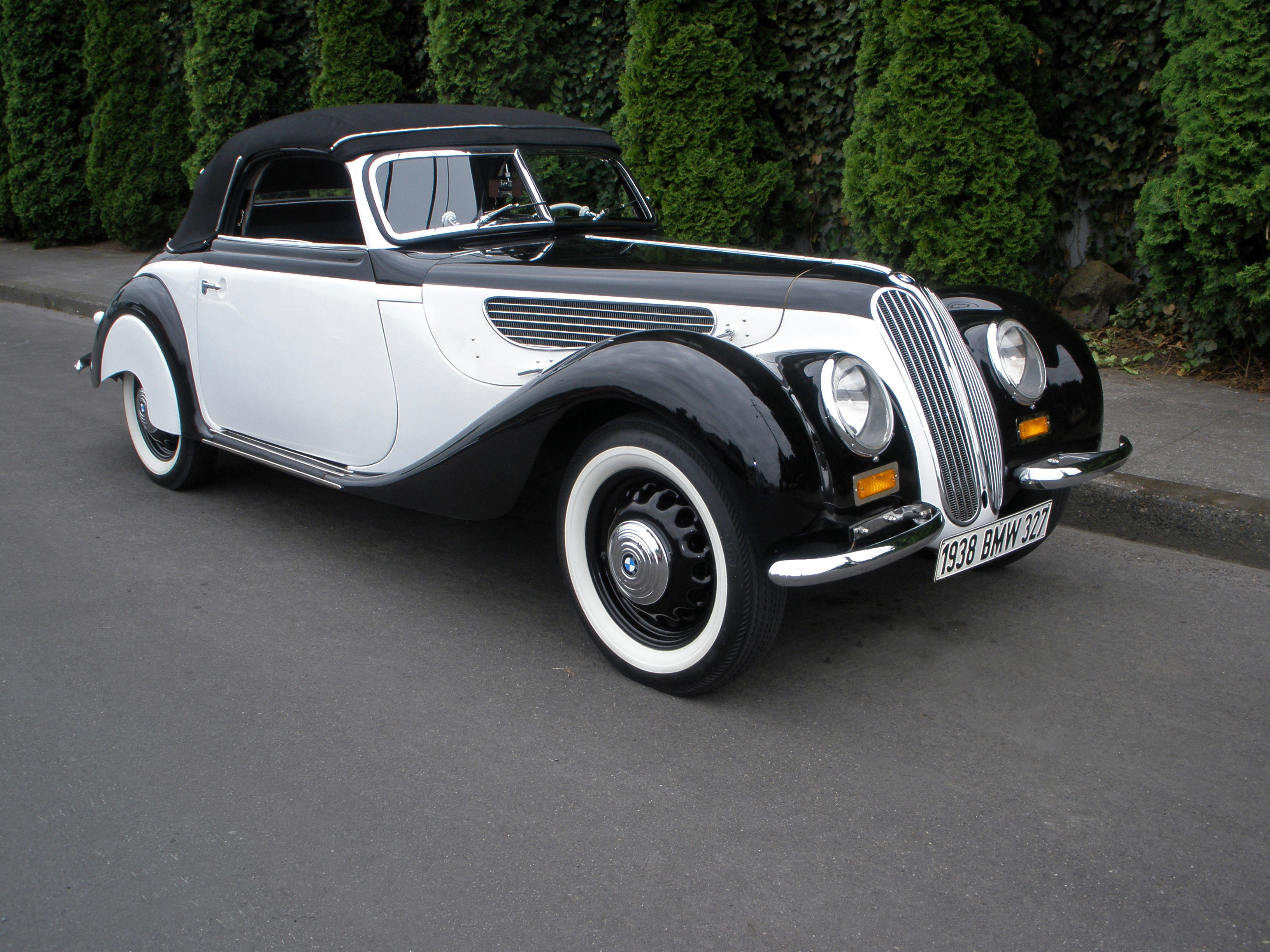


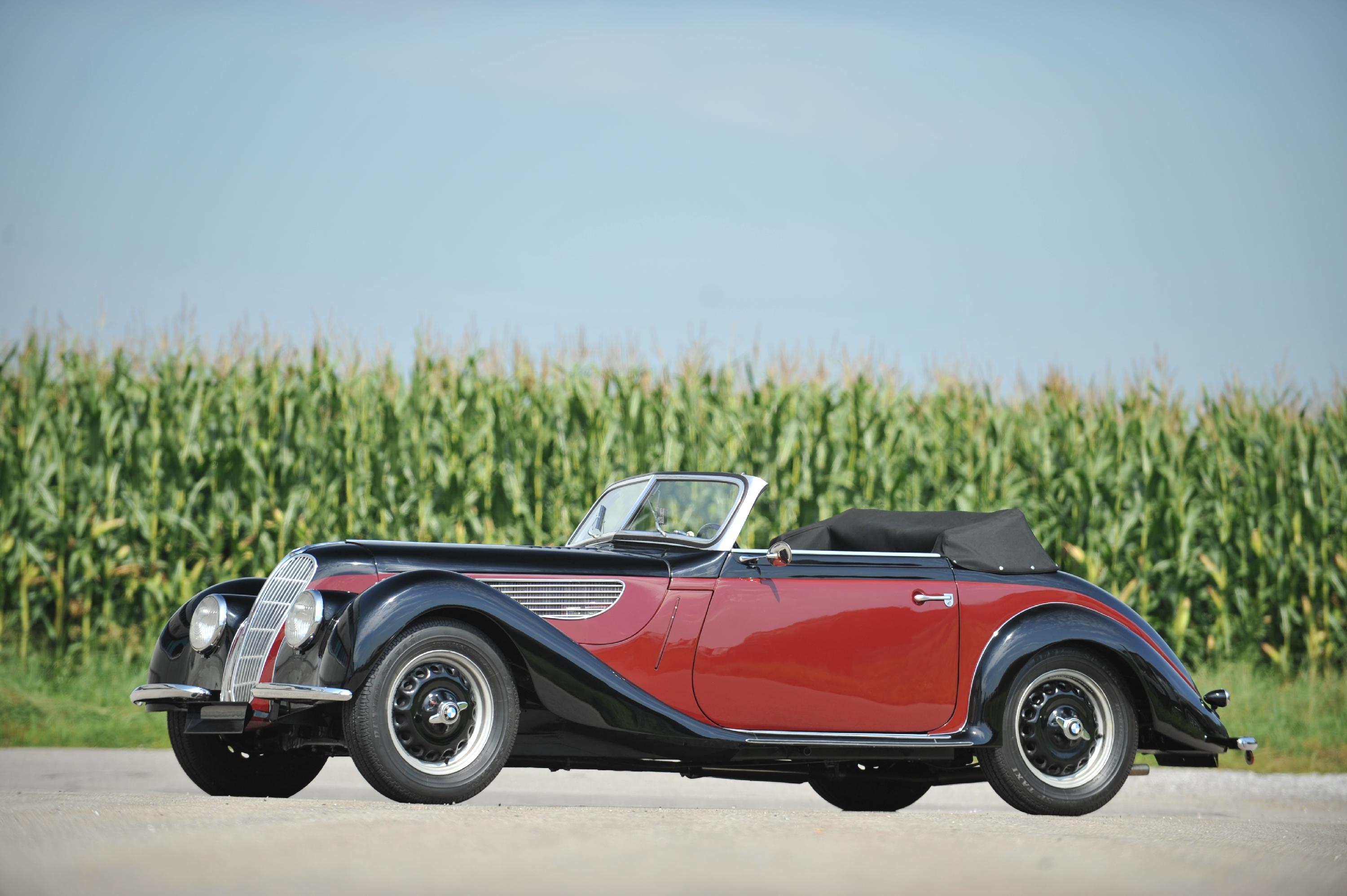

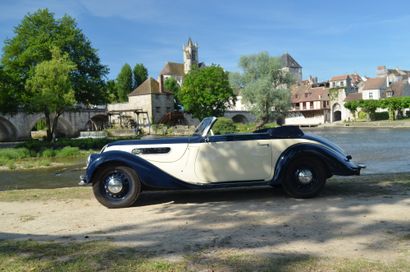

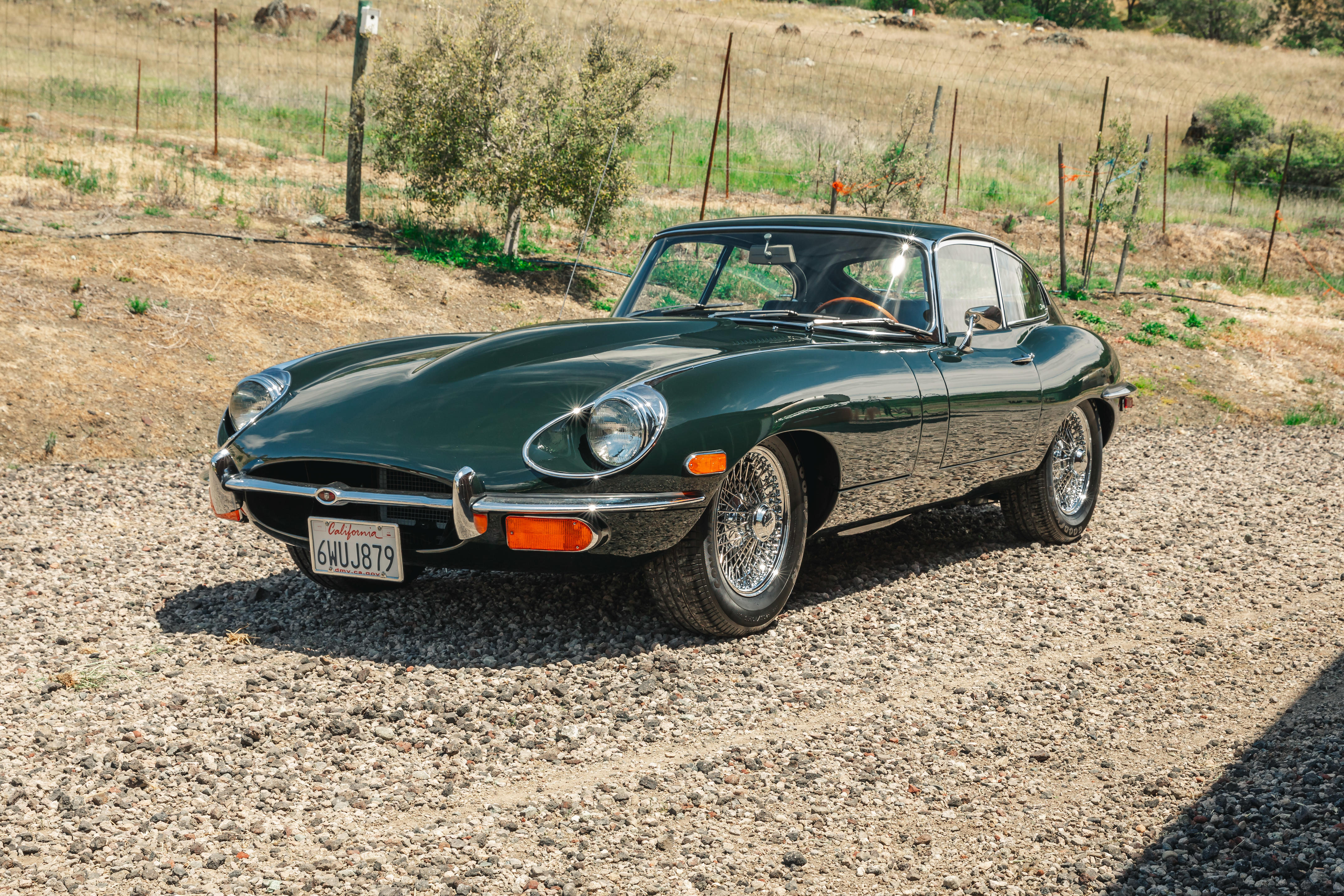

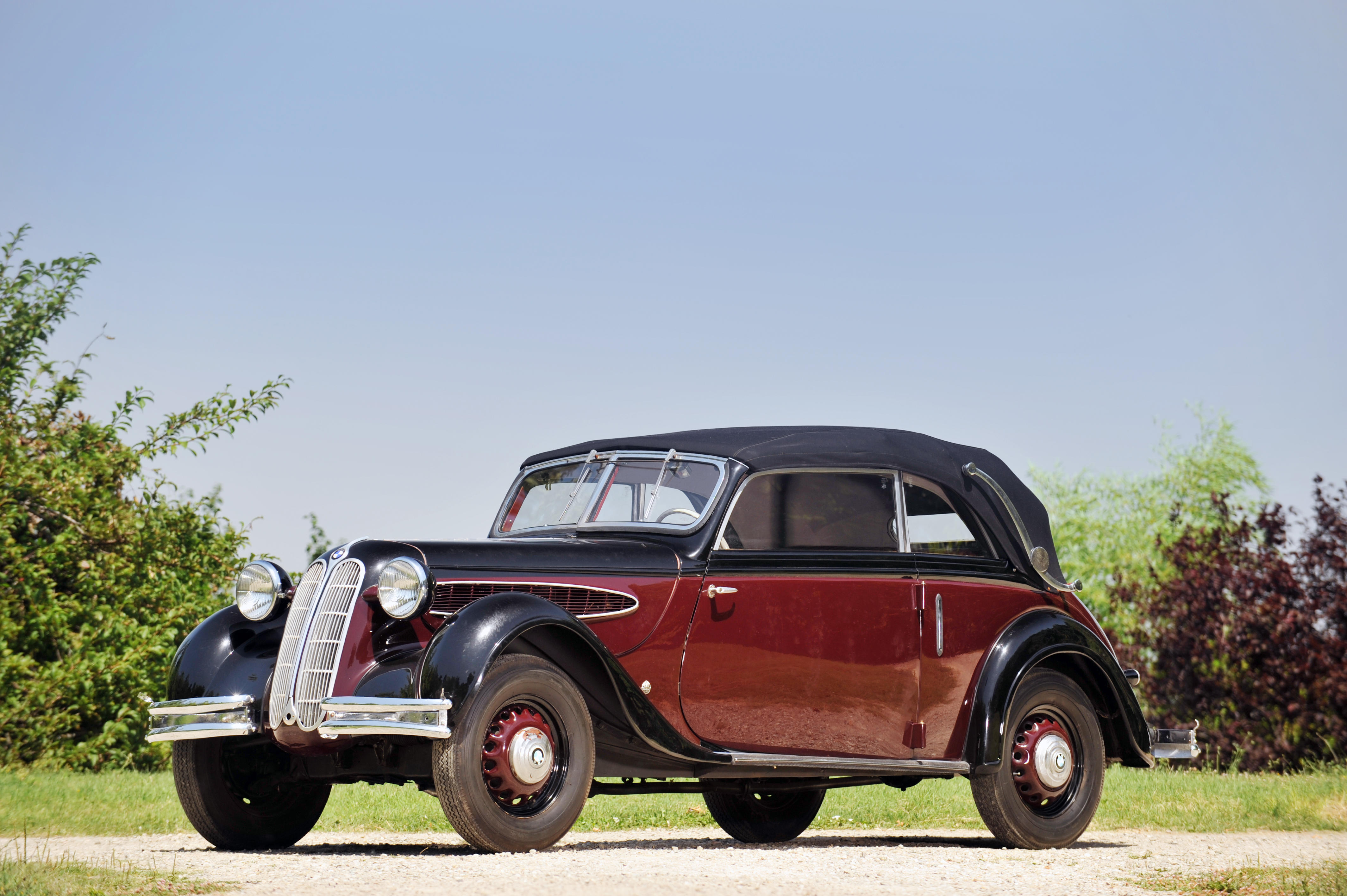

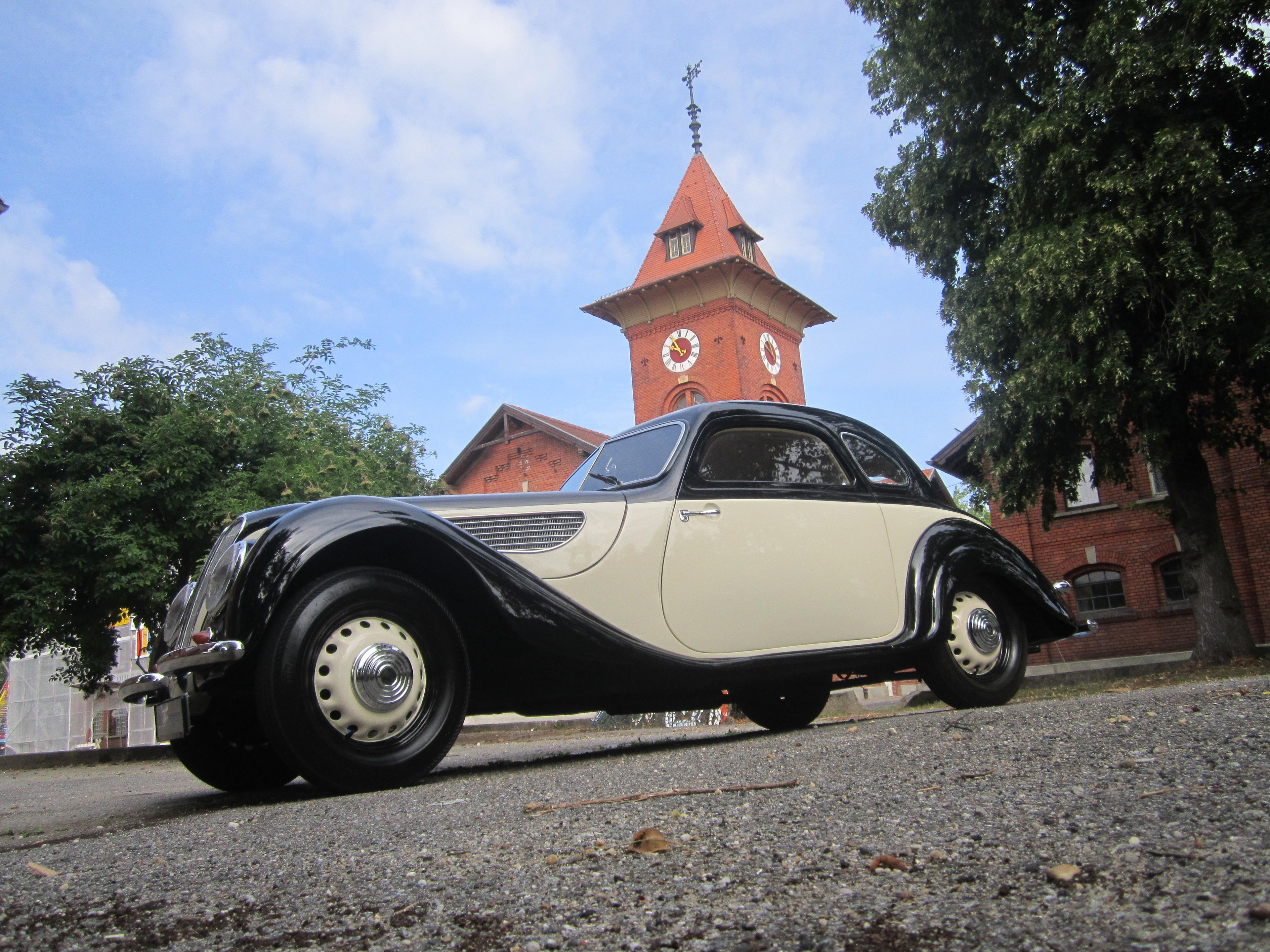
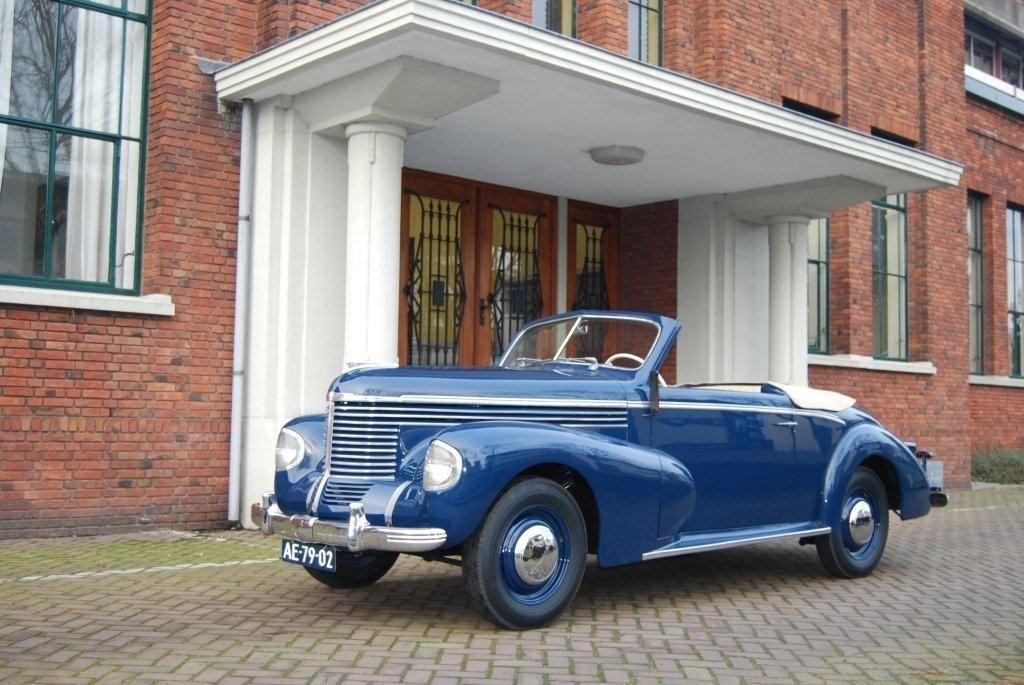
Try LotSearch and its premium features for 7 days - without any costs!
Be notified automatically about new items in upcoming auctions.
Create an alert